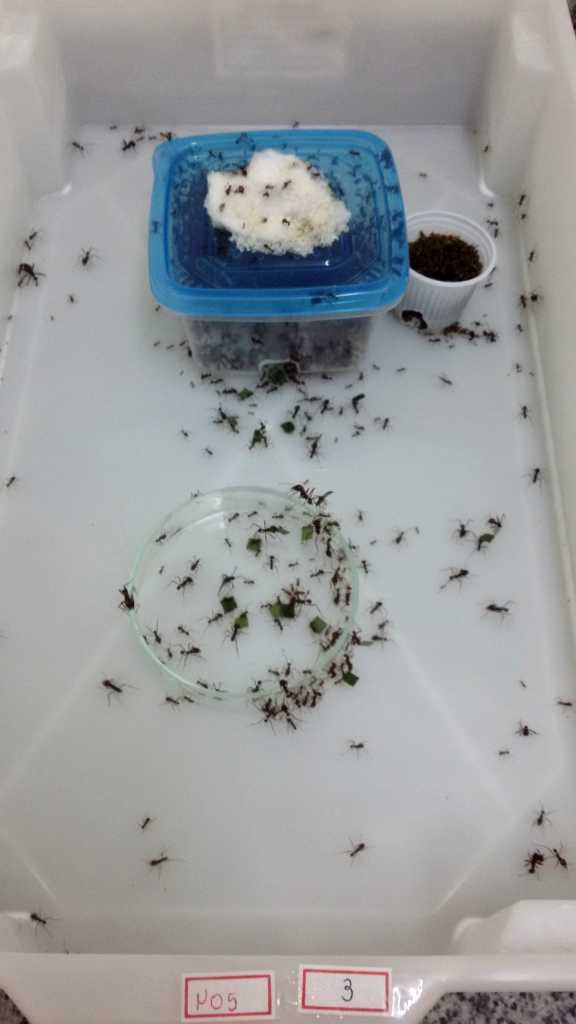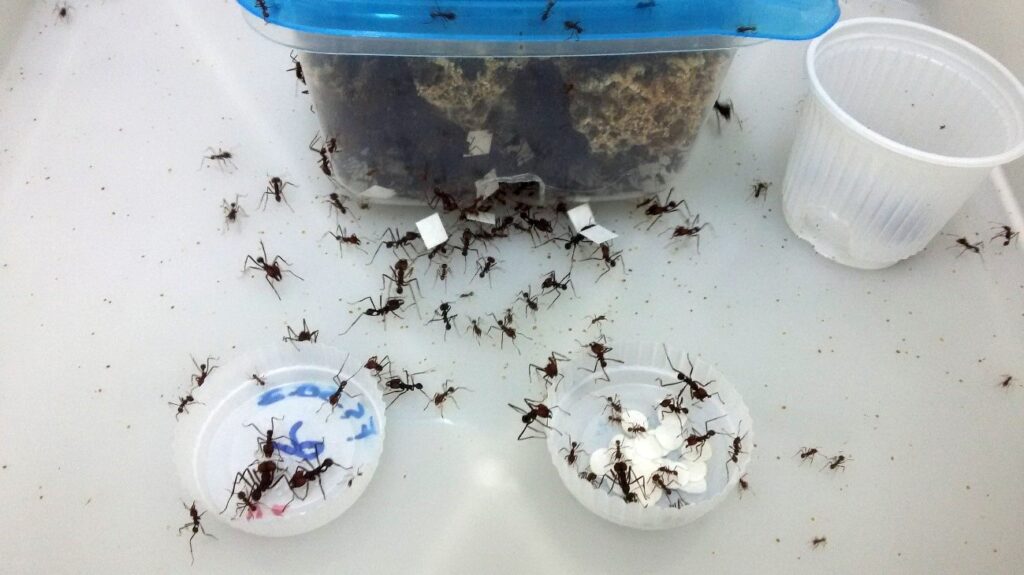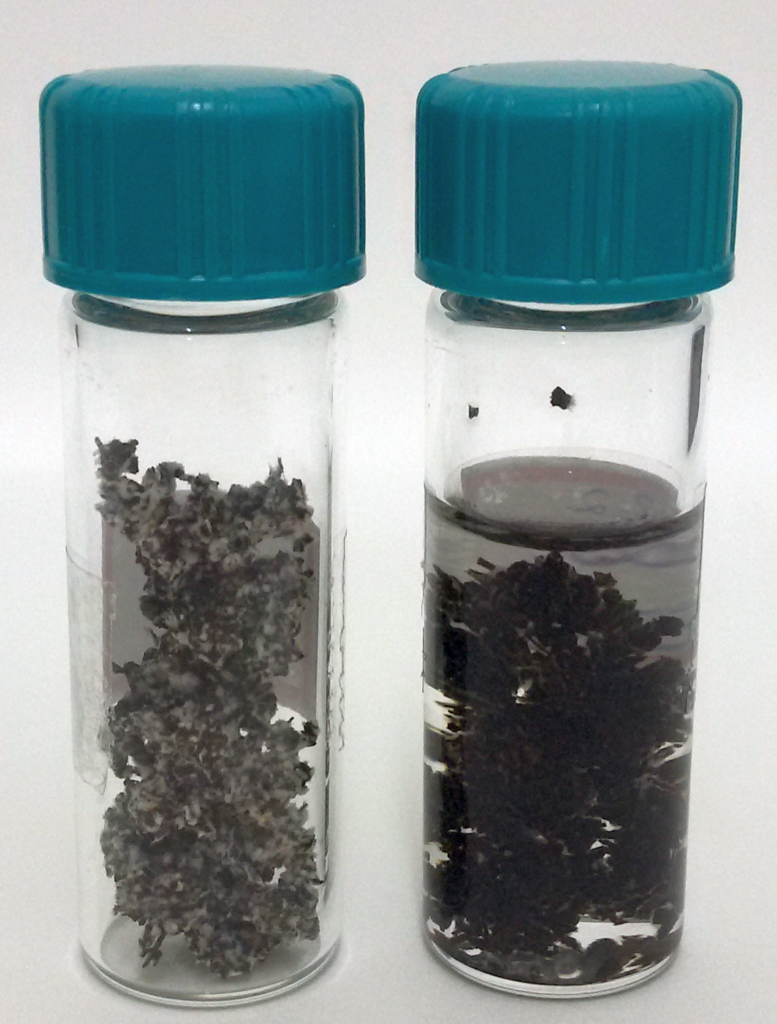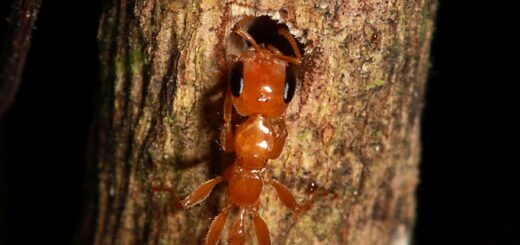Aversive learning as a behavioural mechanism of plant selection in the leaf-cutting ant Atta sexdens
In the recent article “Aversive learning as a behavioural mechanism of plant selection in the leaf-cutting ant Atta sexdens (Hymenoptera: Formicidae)” published in Myrmecological News, Arêdes et al.* investigate the learning processes involved in resource selection in A. sexdens using five experiments and GC-MS. The authors revealed that harmful resources induced decreased plant preference in ants, likely via olfactory learning processes. The study suggests that A. sexdens seems to choose adequate plants based on recognising harmful resources rather than recognising adequate resources. Here, first author Anália Arêdes shares some pictures of the lab work behind it.
A Photoblog by Anália Arêdes

* = Anália Arêdes, Jonathan Rodríguez, Omar Bailez, Jean Carlos dos Santos Lima, Maria Cristina Canela, Ana Maria Viana-Bailez
Figure 1. A subcolony of Atta sexdens was placed in a plastic tray that served as a foraging arena, with a cup used by ants as a dump chamber. In aversive conditioning, 12 subcolonies were fed fragments of Rosa alba leaves and 12 others were fed Ligustrum japonicum leaves impregnated with a 0.02% aqueous solution of the fungicide cycloheximide. The fungicide cycloheximide represents a stimulus that, in low concentrations, is innocuous and undetectable to ants but lethal to fungi and harmful to the colony.

Figure 2. At the end of the aversive conditioning phase, the food of subcolonies was replaced by two plates. One of the plates contained 20 leaf fragments of Rosa alba and the other 20 leaf fragments of Ligustrum japonicum. The number of fragments transported from each plate was recorded.


Figure 3. In the preference test, subcolonies collected fewer fragments of the fungicide-associated plant, and collected fragments were rejected after two hours, while leaf fragments not associated with fungicide were not rejected.


Figure 4. Subcolonies aversively conditioned to fungicide-treated Rosa alba leaves collected fewer paper fragments impregnated with Rosa alba extract than paper fragments impregnated with Ligustrum japonicum extract. Likewise, subcolonies conditioned against Ligustrum japonicum collected fewer fragments impregnated with Ligustrum japonicum extract.

Figure 5 Left: Plastic bottle containing 1 g of Amberlite® XAD4 resin and a glass tube containing 150 mg of Tenax® trapping agent (TA) resin for volatiles. Right: This trapping agent is placed in the garden chamber of a subcolony to capture chemical volatile compounds from the fungal garden for further analysis in a gas chromatograph coupled to a mass spectrometer.


Figure 6. Samples of fungus garden were collected from each subcolony and placed separately in a vial containing hexane and kept at rest for 48 hours at 4 °C. An aliquot of fungal extract from each subcolony was injected into a gas chromatograph coupled to a mass spectrometer.






Recent Comments